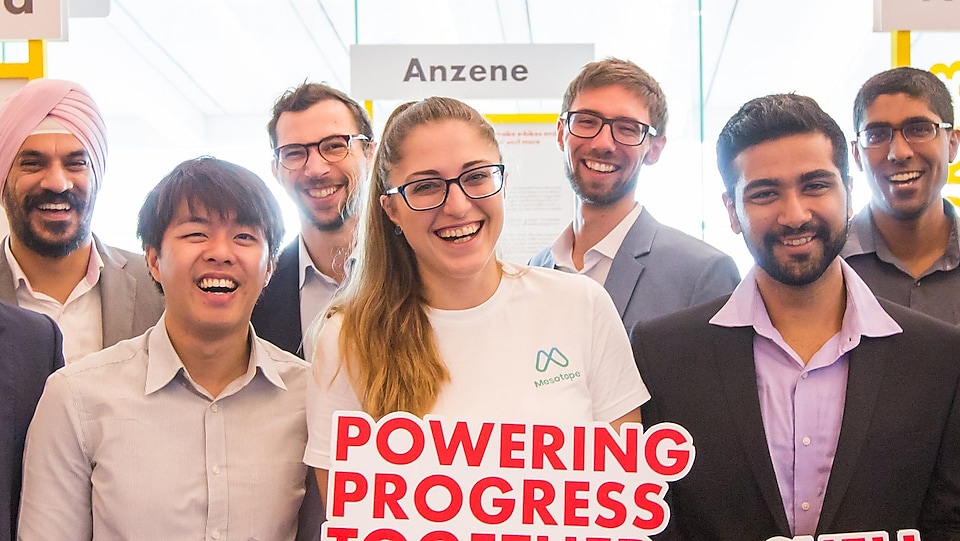
Meet the Start-Ups from Cohort 1
Shell IdeaRefinery has now been rebranded to Shell StartUp Engine, click here to find out more
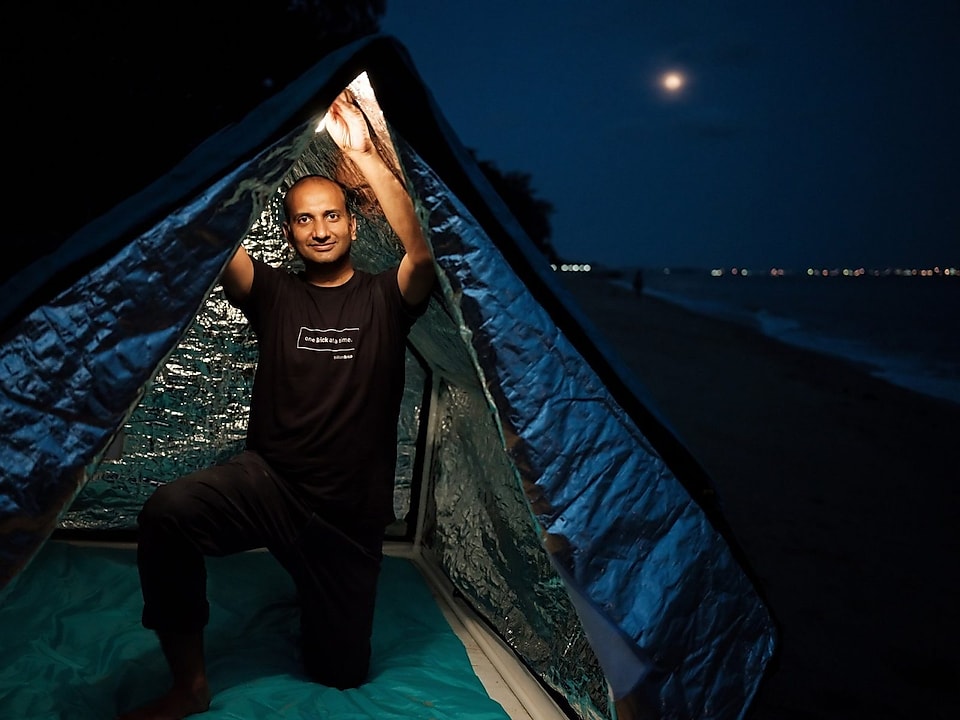
Designing houses for the homeless that produce up to four times the amount of energy consumed
Prasoon Kumar still remembers feeling out-of-place during a conference in Manila on affordable housing. "All the talk was about policy, finance and land acquisition," the 40-year-old architect recalls of the event, which took place a decade ago. "I was the only one speaking about sustainability and a person's quality of life."
Kumar had spent nearly two decades designing airports, hospitals and apartment blocks across Asia, Africa and the United States of America. But it was the plight of the poor across India that particularly struck a nerve.
"Many cities across Asia have seen tremendous wealth in the last decade. But my work had exposed me to the other side. It was one of tremendous poverty, increased traffic, pollution and health problems."
So, after receiving seed funding in 2013, Kumar, who lives in Singapore, left his full-time job to start billionBricks.
The start-up, which has a vision that "no one is homeless in this world", designs sustainable housing for the homeless.
Their first product, WeatherHYDE (pictured), was an easy-to-assemble tent that served as a life-saving homeless shelter. The latest shelter, called PowerHYDE, is even bolder in its mission.
It is an affordable home that produces up to four times the amount of energy it consumes, thanks to solar panels on the roof. Surplus energy is then sold by each household to finance the house, with the mortgage fully payable within 11 years.
A community of 115 PowerHYDE homes can generate the same amount of energy as a 1 megawatt solar power plant.
Kumar says he sees homeless people as customers, and not helpless beneficiaries. "We want to empower them so we work with them to come up with financial plans,'' he says. After testing prototypes in Phnom Penh in Cambodia, the company is now looking for land and funding to build more homes in India, Sri Lanka and the Philippines.
It has been hard work. But Kumar is motivated by the example he sets for his two sons, aged three and six, and his conviction that homelessness can ultimately be eradicated.
"I want people to rethink their belief systems," he says. "We need to approach homelessness as we would any other enterprise."
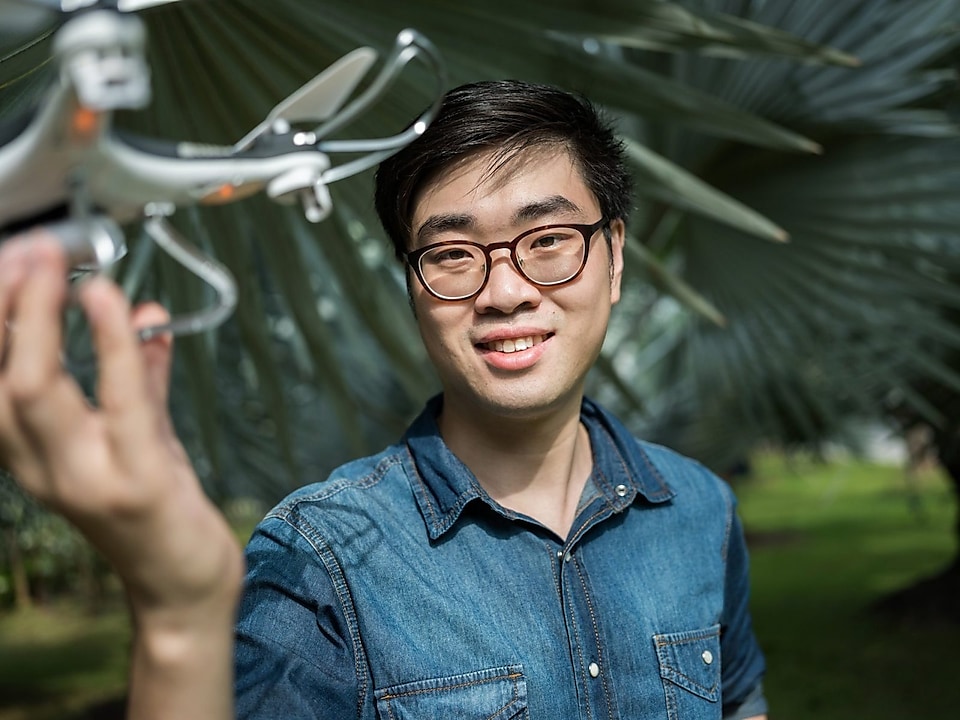
Changing the drone industry with hydrogen power
When he was a chemical engineering student, Adec Thng could not imagine hydrogen as a fuel of the future. "I just saw it as a commercial gas for industrial processes,'' the 34-year-old says.
His mentor Dr Zhang Huajun challenged that. There has been a lot of talk about how hydrogen fuel cell vehicles can help reduce carbon emissions. But Dr Zhang helped Thng see hydrogen as the ideal source of renewable and clean energy - not just for cars, but also in the fast-developing drone industry.
Drones require long-lasting power that conventional lithium polymer batteries cannot offer.
In 2016, the pair started EnergyNova. They developed a solid hydrogen powder which can be stored in a battery for up to 10 years. The battery does not generate any carbon emissions, and the hydrogen powder remains chemically-inactive until it is ready to be used.
Their journey has seen challenges, however, including finding a place to conduct their work. "We had the experience, but no facilities," recalls Thng.
"It would have taken massive funds to build our own hydrogen laboratory so we had to look for one. But they were either too expensive to rent or they were not open to the public.''
In the end, they found a collaboration and research partner in the Clean Energy Research Centre at Temasek Polytechnic in Tampines, Singapore. It also gave them access to a laboratory.
EnergyNova believes its hydrogen battery can be a gamechanger in an industry estimated to be worth $127 billion. This is because it can power a drone for more than two hours, compared to 30 minutes with a regular lithium polymer battery.
Thng has spoken to many drone companies and their customers, including a forestry ministry representative who needs long-flying drones to police illegal loggers at night.
"Long-distance drones can also save lives by delivering medicines to people living in rural areas of undeveloped countries.''
He feels he can do something good for the world. It is this belief that keeps him going, even though he admits he is running low on funds.
"At some point, if things don't work out, I might have to go back to full-time work'' he says. "But I am sure I will end up back in the entrepreneurial space, doing something that can benefit society. It's in my DNA."
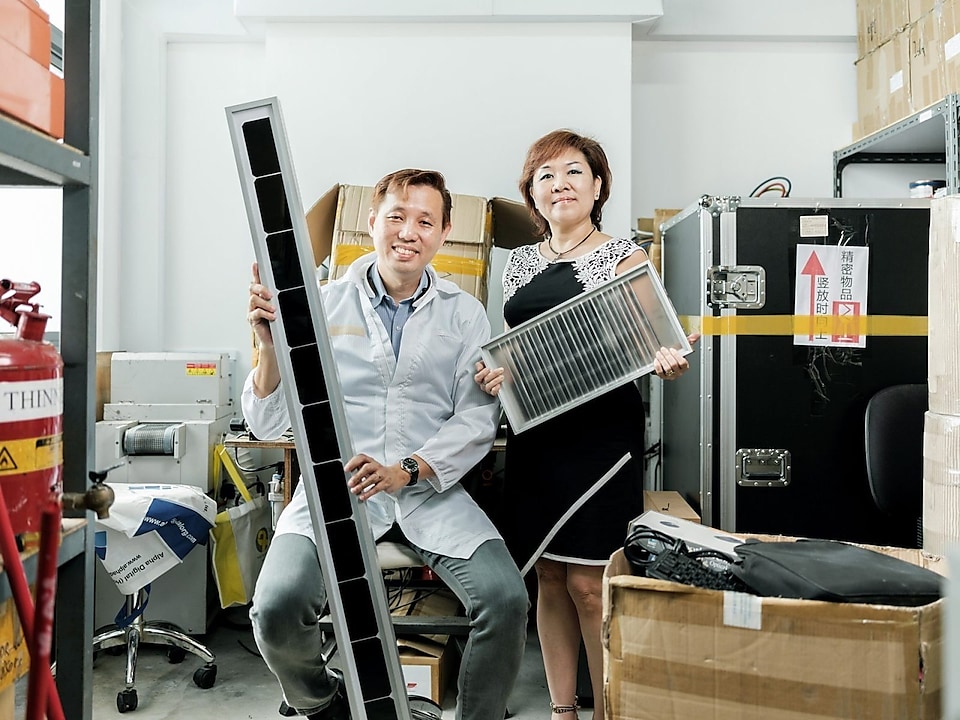
Making solar panels more efficient
Terence Ong is a serial entrepreneur. For more than a decade, he dabbled in numerous businesses – from anti-ageing skin creams to producing CD-ROMs.
Now, aged 46, Ong wants to follow the sun. "If you can harness solar power, you can do anything,'' he says. "The sun is available anywhere and everywhere, even in the coldest places on earth. It is the future of energy.''
However, capturing the power of sunshine efficiently can be a challenge. Concentrated sunlight generates intense heat of up to 200° Celsius. This can slow down the conversion of energy in solar panels which operate better under cooler temperatures.
Heat can also wear down the solar panels over time, making them even less efficient. Ong, who trained as an engineer, believes he is on the cusp of a solution.
His Solarite model features a mirror which concentrates sunlight onto a solar panel. This panel has a coating which reflects heat-causing infra-red rays. In addition, a 20mm-thick vacuum chamber between the mirror and the panel acts as a heat buffer.
"Imagine a Thermos flask," explains Ong. "It may contain hot water, but because of the vacuum chamber, you can hold it without feeling the heat."
When Ong filed a patent for his invention in May 2017, his lawyer said the idea was too simple. "But that is precisely the point, I replied. The idea has to be simple enough for it to be truly disruptive. If it is too complicated, it will not succeed.''
His wife, Julie (also pictured), is his business partner and strongest supporter. "She believes in my vision and we know how to keep our work and private lives separate.
"At work, we have placed our desks five metres apart from each other. This ensures both of us have cool heads should we march over to discuss a business matter.''
Ong says that Solarite can increase the efficiency of electricity conversion by 15% and costs 25% less than conventional solar panels. He believes it leaves him well-placed to turn a profit quickly.
"I have been starting up businesses for the last 15 years so I have done many cost and feasibility studies. There is no reason why Solarite will not take off. It is a calculated risk, but one with a strong chance of success.''
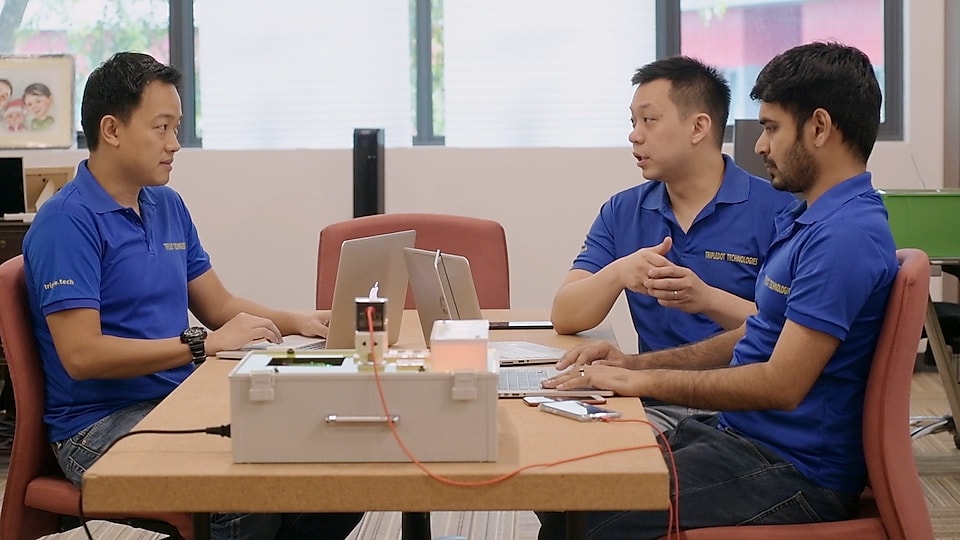
A smartphone app to encourage responsible energy usage
It was a hot and humid night in Beijing, China, that Chew Ken Wee experienced a literal lesson on power and responsibility.
“I was at home watching TV when the lights and the air-conditioning suddenly went off,” the 37-year-old says. “I had run out of cash on my electricity card so I had to dash out in the middle of the night, in the sweltering heat, to find a kiosk to top up the balance.’’
In China, smartcards with cash credits are slotted into home meters. Charges are deducted in real time as utilities such as water, electricity and gas are consumed. Users are responsible for ensuring there is enough money on their cards, using banks or ATM machines. Utilities are cut off immediately when money runs out.
“I managed to top up my card. But the electric meters were in a locked stairwell, so I still had to wait until the next morning for it to be opened,’’ says Ken Wee.
That meant spending a restless night without air-conditioning, a night which got him thinking. Despite its inconvenience, he liked how the system made the consumer responsible for his utilities supply. This, he believes, inadvertently encourages people to be more vigilant about how they use energy.
So, after returning to Singapore in 2016, Ken Wee got to work on a mobile app that gives people real-time data on how much energy they consume.
Meter readings are communicated to the cloud which pushes the data to the app.
This gives users complete control over the energy they are consuming, even when they are not at home. “If you are an Airbnb host, and your tenant leaves the air conditioning on, you can shut it off remotely. You can even do that when you are on vacation in a different country,’’ he says.
Ken Wee says his app will also benefit power companies and retailers in developing countries which still depend on unreliable manual data. In these countries, utility fees are often not even collected and it is common for households to steal from the power grid. “Ours is actually a simple idea. It is not rocket science,’’ says Chew. “It is time to disrupt the existing infrastructure.’’
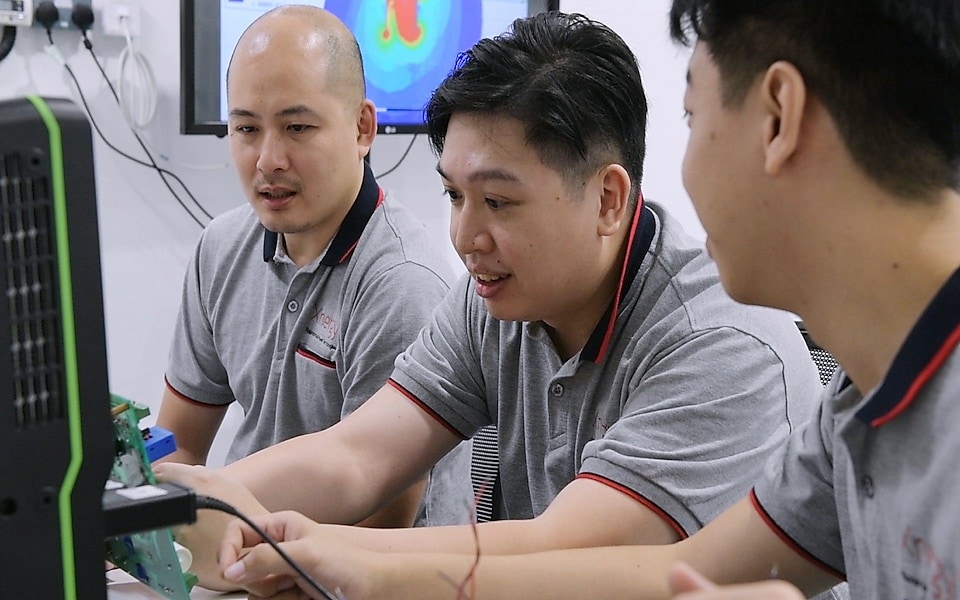
Wireless charging for electric vehicles
Tong Chin Foong likes to keep moving.
The electrical engineer spent more than a decade at multinational companies developing technology for the aerospace industry. He enjoyed the work, but disliked the pace of companies. “Corporations move slowly and, as a result, we developed great ideas that never got to see the light of day,” the 36-year-old says. “They were missed opportunities.’’
So, in 2017, he quit his job. He started Xnergy (pronounced “synergy”) with two like-minded (and equally frustrated) engineers. Their plan was to come up with new ideas in technology and engineering.
Their first was wireless charging stations for electric vehicles (EVs). It is inspired by robots which move things around in large logistics warehouses. “They are actually small EVs,” says Foong. “They may be autonomous but they still operate on batteries and need charging. Someone has to be around to plug in a cable.’’
Xnergy is currently testing its wireless charging technology on robots as well as on e-bikes before scaling it up to work on EVs. “Right now, you can only drive short distances in electric cars before you need to stop and charge them. But imagine if you could charge your car along roads, as you travel to your destination,’’ he says.
Tong is eager for his idea to succeed and believes it will take off commercially. “The question is how big it can grow. But that is something we are not too concerned about. Not every company has to be a billion-dollar one. We just want to do our part for the environment.”
By Soh Chin Ong
You may also be interested in
Join Shell StartUp Engine Singapore
The energy sector is transforming fast and we invite startups from Singapore with exciting technologies to join us and power the future of smart, clean energy together.
Meet our start-ups
Hear it from the startups who have joined our earlier cohorts.

